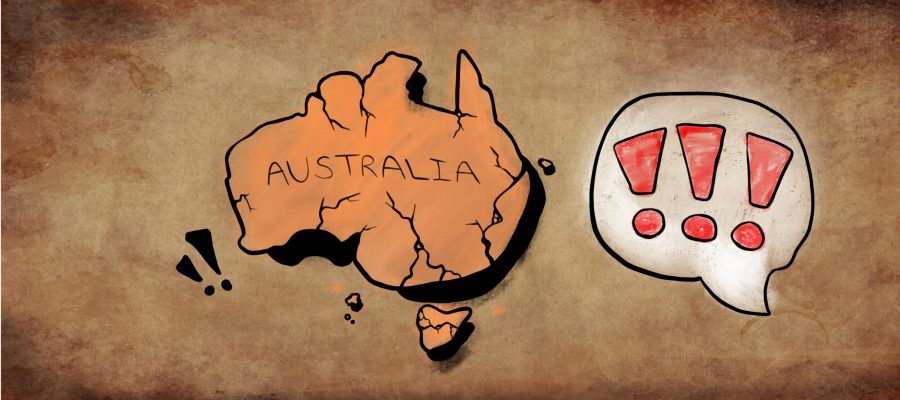Ancient Aboriginal sites are destroyed amid Australian wildfires
February 10, 2020
Since July 2019, wildfires have ravaged Australia, leaving thousands of homes destroyed, millions of animals and at least 28 people dead and terrible air quality and health conditions for everyone else who resides in the country, according to CNN.
The fires were exacerbated by the current dry season in Australia, as well as people starting forest fires.
According to The New York Times, Australia’s Prime Minister Scott Morrison chose to vacation in Hawaii during this crisis, instead of overseeing the situation.
Amidst Australia’s bushfire crisis, one issue that hasn’t gotten much attention is the destruction of ancient Aboriginal sites across Australia.
Up until National Geographic did a piece on Aboriginal Australians on Jan. 23, the term Aboriginal was relatively unknown. Though the definition is disputed, the magazine best explained them as “…two groups: Aboriginal peoples, who are related to those who already inhabited Australia when Britain began colonizing the island in 1788, and Torres Strait Islander peoples, who descend from residents of the Torres Strait Islands, a group of islands that is part of modern-day Queensland, Australia.” Essentially, they are the true natives of Australia.
Aboriginals are also theorized to be the first people to leave Africa 70,000 years ago, making their sites even more valuable.
Each one reveals details about how Aboriginals came to leave Africa, how they lived, and is a key insight into human civilization. In more recent history, from the 1910s to the 1930s, these groups were essentially forced to forget their heritage. Their names were changed, their native language was banned and they were placed into non-Aboriginal families.
Though they are the legitimate native residents of Australia, Aboriginals were also not granted citizenship or even the right to vote in the country until 1965.
Having gone through so much to be recognized as citizens of Australia, it is also important to recognize their culture and land.
With the current fires in Australia, Scientific American reports that parts of eastern Victoria have been affected, containing Aboriginal sites that “date back 20,000 years to the last ice age.”
Additionally, Sydney is home to hundreds of sites, which, with the fires blazing on, are unreachable. The land surrounding most of these ancient sites has been burned, and with the flames so intense, the condition of the sites cannot be determined.
In conjunction with the Aboriginal population, archeologists are also worried.
Important historical relics, such as stone arrangements and even trees altered for ceremonial purposes, may have either been destroyed in the fires or by the water being dropped from airplanes to extinguish the conflagrations.
The loss is monumental, as with every site lost, a part of the minuscule recorded history of the Aboriginal population is lost as well.
Archaeologists are also worried that the debris and soot from the fires could cause damage as well.
Though no one is able to enter the sites due to the intense flames, they suspect that soot could have ruined engravings and Aboriginal rock art that had been carefully preserved.
“Soot was the most common cause of damage to Indigenous sites following bush fires in the alpine regions of Victoria in 2003,” Flinders University archaeologist Alice Gorman told Scientific American.
“Even sites that would seem to be more robust, such as quarries where stone tools have been dug out and scattered on the ground, are likely to have been damaged by fires and radiant heat.”
Though there has been massive support and aid to put out the Australian fires, they have not yet been extinguished.
Clean-up crews have been sent across the country to assess damaged areas and remove debris.
This, however, is not necessarily beneficial, as crews unaware of Aboriginal sites can remove important artifacts and parts of the land unknowingly.
With not enough time to educate these crews, the continuing fires and soot, as well as the efforts to preserve the sites, appears to be a lost cause. Not all hope is gone, though.
Clearing the burnt vegetation could lead to the discovery of more sites that may have been previously inaccessible.
As Australia’s dry season comes to an end and temperatures begin to dwindle down, the government expects the fires to become more containable and the damage of the Aboriginal sites and the rest of Australia can be truly assessed.
Until then, however, thousands of Aboriginal artifacts and sites are already believed to have gone up in flames, lost to history.








